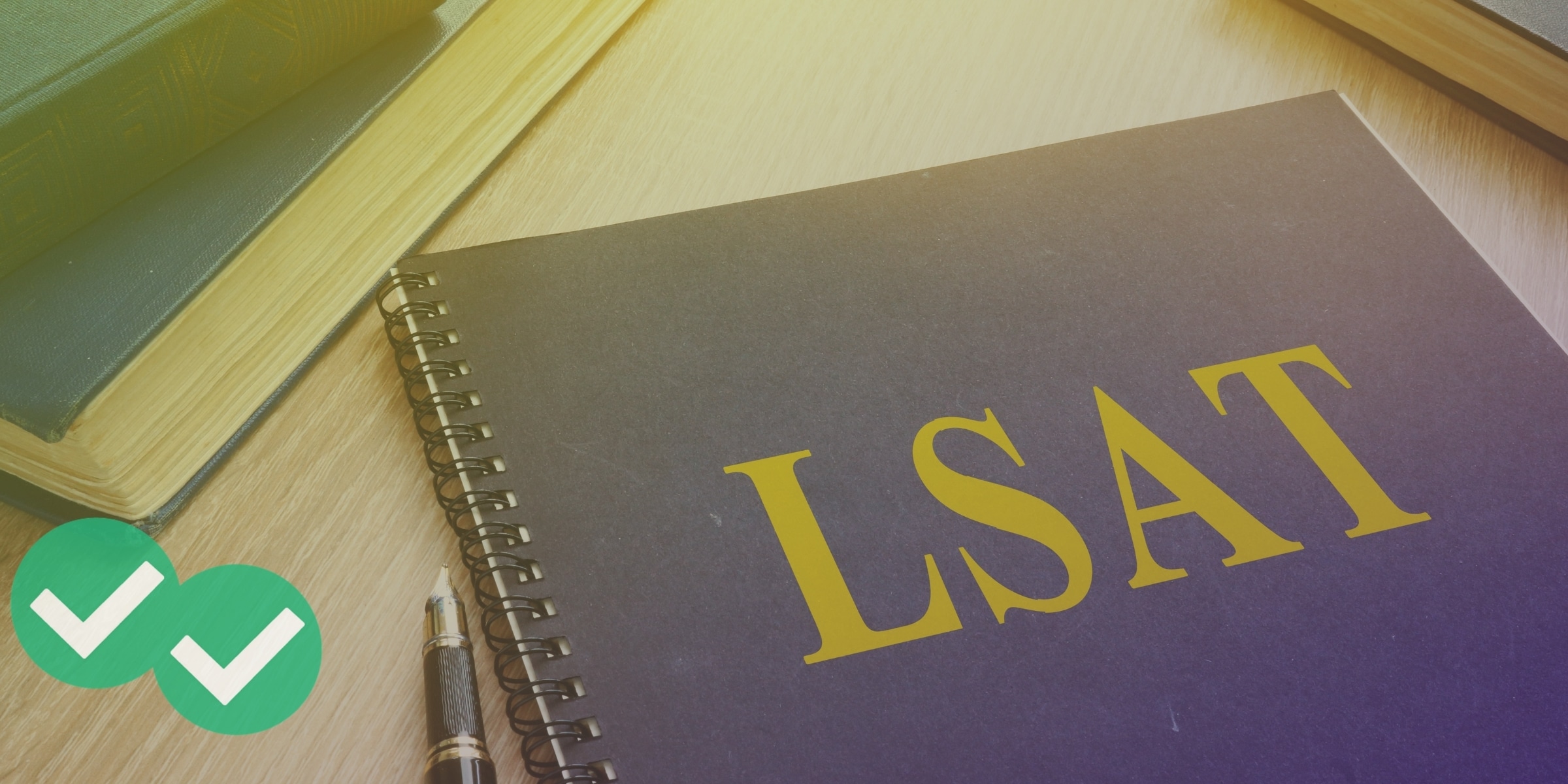Hello future lawyer! I think it’s fair to say that most prospective law students see the LSAT exam as one of the biggest hurdles to gaining admission to the law school of their dreams. Conquering the exam can seem daunting, and studying can be pretty overwhelming at first. But never fear! I’m excited to share with you the top five tips on how to prepare for the LSAT that I’ve learned from working with aspiring law students over the last ten-plus years.
- Follow a study schedule built around the PrepTests
- Review using an error log
- Be methodical
- Experiment
- Focus on the most common content
What do these tips mean in the context of LSAT preparation? Keep reading for the full breakdown!

How should I prepare for the LSAT?
Getting Started With LSAT Prep
- Any successful LSAT journey should start with reading about what is on the LSAT.
- Once you’ve got the basic info, you’re ready to take a full, timed practice test. Don’t worry about feeling unprepared or a little overwhelmed! Almost everybody does at first. This first try is only what we call a “diagnostic” practice test. The purpose is to give you a first-hand look at what’s actually on the test and how it feels to get through it. Plus it will be really useful to have a baseline score to help you set a goal and make a winning LSAT prep plan.
- Knowing your score goal is a critical piece of how you’ll prepare for the LSAT. Of course, we all want to get the best score we possibly can, but you can help yourself out a lot by doing a little research on your target schools to determine the score you likely need. For instance, the best LSAT study plan for someone who just wants to be admitted to a competitive program may be very different from the plan that someone who’s looking for a full ride to a top-ranked school will follow. Know your number? Cool!
Now onto the top five tips…
1. Follow a Study Schedule Built Around Official LSAT PrepTests
There’s no doubt that sticking to a study schedule is the most common difference between test-takers who end up with the score they deserve and those who don’t. You can check out Magoosh’s selection of recommended LSAT study schedules , and most reputable LSAT prep books and courses will have suggested study schedules for you to follow too.
Your study schedule should include at least a little bit of instruction from the experts, whether that’s video lessons, a textbook such as Mike Kim’s LSAT Trainer, or live LSAT classes. As long as your source is a confirmed LSAT expert with verifiably awesome reviews, you’ll end up getting mostly the same technical advice anywhere.
But the most important and really the only indispensable LSAT study materials are the official LSAT PrepTests (Every published PrepTest is available as part of a Magoosh LSAT subscription).
The LSAT is different from pretty much any other exam you’ll ever prepare for in two really important ways: First, there is virtually NO outside knowledge needed! The LSAT is only meant to measure your reasoning skills. It covers virtually no academic content like math or English. Second, LSAC publishes most of the real, actual LSAT tests for us to use as practice. That means the bulk of your study time (seriously, at least 50% and up to about 80% of your total study hours) should be spent taking and carefully reviewing the PrepTests. No LSAT instructor worth listening to will ever tell you different.
2. Use an Error Log
From my experience, many readers will see this tip and say, “Zuh? Error log? What’s that?!” The term is borrowed from computer engineering, but for the purpose of learning how to study for the LSAT, it just means an organized list of practice questions you need to spend more time reviewing.
At Magoosh we strongly recommend creating some kind of digital document to serve as your error log – I’ve seen students use docs, spreadsheets, and slides all with great results. Exactly how you set up your error log is a matter of personal preference. The main point here is that you’ll never move on to new practice questions without reviewing and fixing your previous mistakes first!
Now don’t let the name fool you! You should compile not only questions you get wrong in your error log but also questions that you got right but guessed on or took too much time to answer. Check out our guide to error logs to learn how to put together a dynamite error log. (The article is from our GMAT blog, so some details are specific to that exam, but the basic guidance is the same for the LSAT.)
3. Take a Method-Based Approach
Remember, the LSAT has almost no academic content. When you think about how to prepare for the LSAT, think of it more like sports or performing arts than school. You’re preparing to give a performance, not to learn a lot of new stuff. Think about how you get ready for game day or your recital: lots and lots of repetitive practice. To make that practice as effective as possible, view it as training yourself to apply a consistent method.
Of course, you’ll need different methods for different sections of the test. In some cases, you might even need to apply a special method just for a certain type of question. But on any standardized test, every question fits some kind of repetitive pattern the test makers have used again and again. And of course, on the LSAT, every question is multiple-choice. So at a high level, every quality test-taking method shares the same basic structure: first, you recognize a pattern you’ve seen before to help you break a question down, then you use the process of elimination.
As you get started on your LSAT journey, you’ll feel yourself getting familiar with all these patterns that keep coming up on question after question. After a while, each time you try a new question you’ll say, “I’ve seen one just like this before!” And you’ll be able to answer in a practiced, methodical way. Also, there’s no pressure to agree with right answers or to be able to explain why they’re correct. Take advantage of the structure of the test and make the process of elimination a consistent part of your methods.
4. Experiment With Different Approaches Before Test Day
Lots of LSAT students get too caught up in their practice test scores and lose sight of improving their process as they get closer to test day. The same strategies don’t work best for every test-taker. And let’s face it, not every practice test will be your best anyway. So use your practice more productively by trying out some different tactics. With that experience under your belt, you’ll be in a really strong position to decide what will work best for YOU on test day.
You’ll hear a lot of varying advice on the best way to work on different sections and answer different types of questions, so there will be no shortage of opportunities to experiment. But one big area almost everybody needs to experiment with is how to pace themselves. Don’t just assume that you should try to give your best effort on every question in a section.
For many students I’ve worked with, focusing on completing three out of four logic games in a section and guessing on the rest (or three out of four reading comprehension passages, or about three-quarters of a logical reasoning section) will actually produce a higher score. Which way works best for you? You’ll have to experiment to find out! Once you’re down to the last two or three weeks before your test, you’ll confidently make your strategic choices for test day, and your future lawyer self will thank you very much.
5. Prioritize the Most Common Test Content
Once you start cracking the LSAT prep books (or watching videos or attending classes), you’ll start to become hip to literally dozens of different question types, logic games setups, and logical flaws. Looking at a typical table of contents or course outline, it’s easy to think that everything is equally important and that studying for the LSAT means being comprehensively expert in all of it. Not so!
Remember the wisdom of Joseph Juran. He said:
For many phenomena, 80% of the consequences stem from 20% of the causes.
The LSAT is most definitely one of those phenomena. In other words, there is actually a small basket of question types and patterns that show up frequently on virtually every PrepTest, while others show up only occasionally. That means we stand to gain the most points by prioritizing those most common question types and patterns. For many test-takers, score goals will be highly achievable without ever really studying the less common stuff.
You’ll gain plenty of familiarity with what shows up most once you’ve been through a handful of PrepTests. For instance, ‘assumption’ and ‘flaw’ questions each account for about 15% of all Logical Reasoning questions, while ‘point at issue’ and ‘method of argument’ questions appear far less commonly. Reaching your score goal will mean focusing on mastering the most common content, and just brushing up everything else. Remember the 80/20 rule!
A Final Word
Can you see yourself following this prescription for how to prepare for the LSAT? Of course you can! And of course, you too can reach your goals. Happy studying!





